When I visit the Pine Barrens, I am filled with the joy that wild places bring me. They give me hope that we can redeem our destructive ways and live sustainably, even when I see so much trash and mistreatment. The region has been inhabited for many centuries and has had its resources exhausted multiple times, and yet it thrives like an untamed wilderness, nurturing many species that can eke out an existence from its meager nourishment, and spewing enormous clouds of pollen as its namesake trees wildly fornicate.
The trees were cut down for ships and charcoal, the sand scooped for glass and sifted for bog iron. There’s a 1500-year-old shell pile nineteen feet deep at the eastern terminus of the Pinelands that proves humans have lived here for many centuries. It took the threat of flattening it to build an airport to protect it.
The New Jersey Pinelands National Preserve is home to many carnivorous plants—such as the pitcher plants and bloodworts you can see at the link there—as well as sundews, which catch insects in their sticky sap:
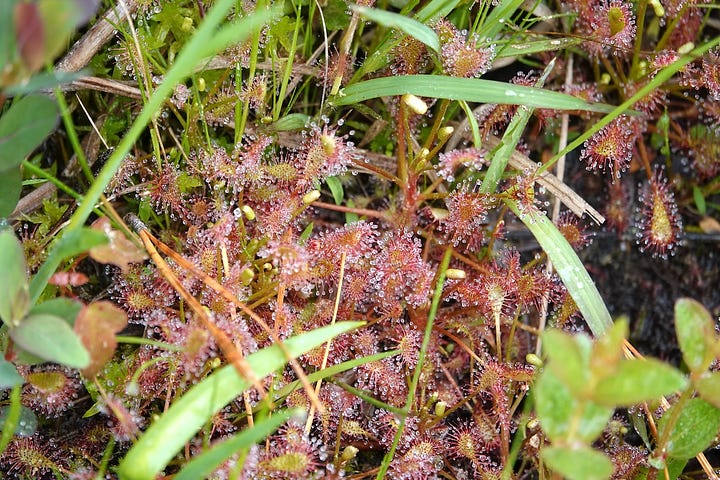
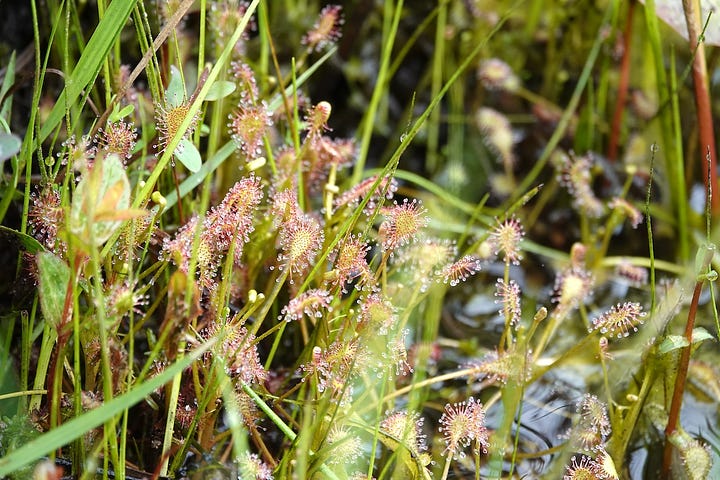
When you read this it will be Sunday, and I’ll be biking at Black Run to see the prickly pear cacti in bloom. I’ve had to curtail my rides to wider trails, as the ticks are out in force, thanks to the mild winter. Expect more of those, and them. I wanted to explore the ruins of a munitions plant that built the firebombs dropped on Japan in World War II, and fireworks factory—unsure if it’s the same business repurposed after the war—but the undergrowth was too lush to see anything. This foundation is all I could easily see, and that mudhole was deeper and stickier than it looks. I nearly lost my boots testing it.
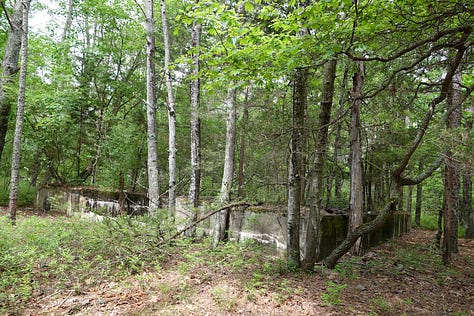
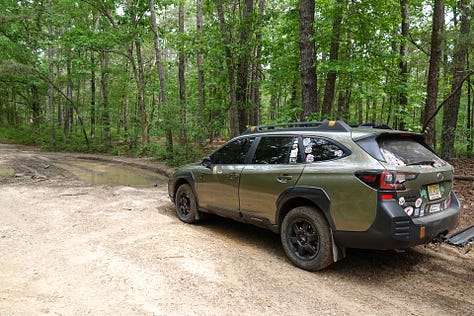
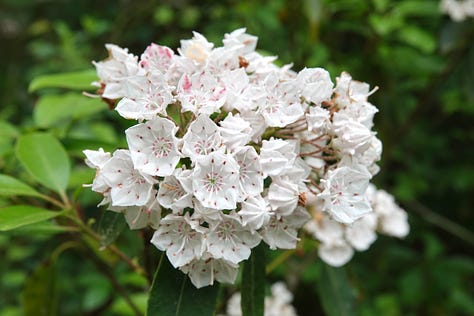
But it was far from a wasted trip. I found a few hidden trails to explore, and the Mountain Laurel was in bloom. They smell as wonderful as they look. On another excursion, I hiked around Parvin Lake. I woke up that morning knowing that I needed to see the sun on water. I could have visited the busy, gray Delaware River, or the cold and violent Atlantic, but I chose this small lake because it’s a mere three miles around, and makes for a pleasant hike before the heat of the day. It’s also where a birder showed me my first Black and White Warbler, who I now know how to identify as the wee monochrome birds who like to hang out at the ends of tree branches. I didn’t see any warblers this time, but the Cedar Waxwings were out, and they look like someone carved them out of sandalwood.
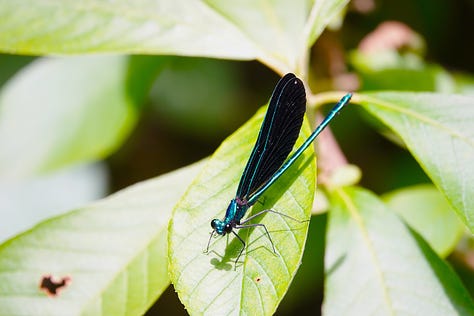
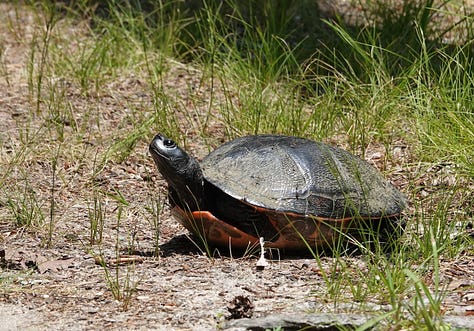

The birds were shy, but the dragonflies and their kind were not. I snapped a close-up of an Ebony Jewelwing that shows the veins on its ebony wings, and I found a turtle who was far from water and covered in flies and mosquitoes. They may have been looking for a place to bury eggs, but I didn’t sex them by sticking my finger up their cloaca, and they weren’t digging at the campground where I found them. I may have erred on the side of caution, but I plunked this one back in the lake, so they didn’t bake in the sun.
A few weeks earlier, I had set out with my Subaru Trail Crew to perform a clean-up for the Department of Environmental Protection, in a Wildlife Management Area that is usually off-limits. We removed a semi-container load of broken furniture, smashed televisions, and other trash from a dump site. It was boring work, sifting broken glass out of the sand and carrying discarded roofing shingles to a trailer.
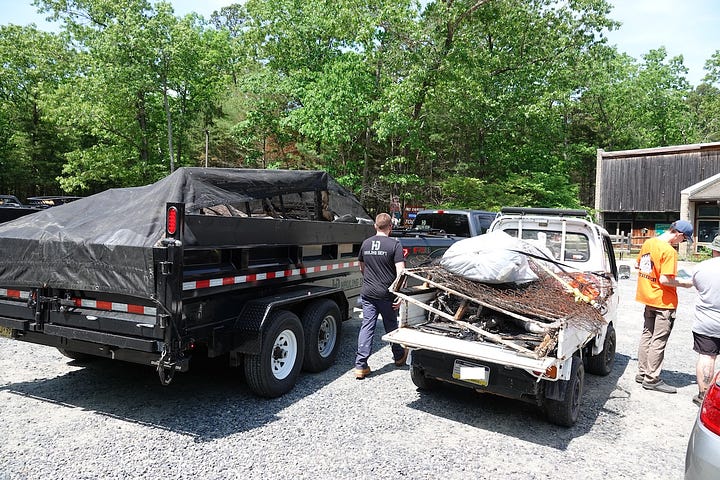
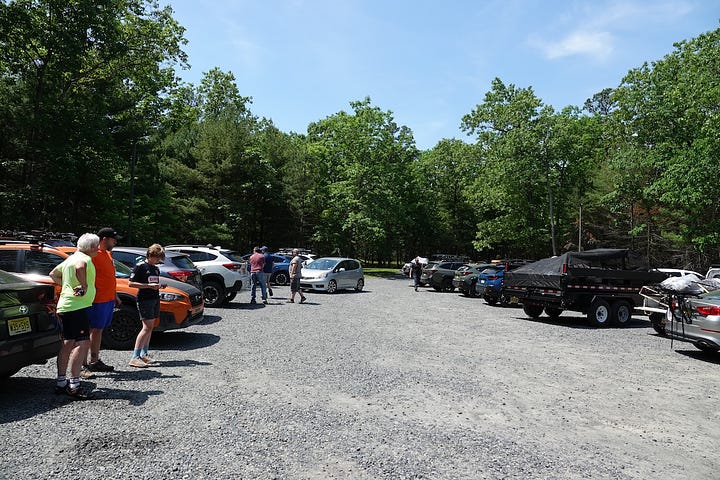
Seeing so many people show up on a hot summer day to clean up trash gave me hope, too. Think of the New Jersey Pine Barrens as the Phoenix Forest; it has risen from the ashes many times, whether from wildfires or being cut down for charcoal furnaces to melt bog iron. If you walked through it, you would only know because of the relative youth of the trees. The cutting, seawater creep, and crowding by the pines makes old growth Atlantic White Cedars a rarity; some still exist, and the aged pines blackened by fire—but unbowed—remind us that this sandy barren land sits atop an immense acquifer of pure water that will feed an immense and varied amount of life, if we stop abusing it for a few decades.




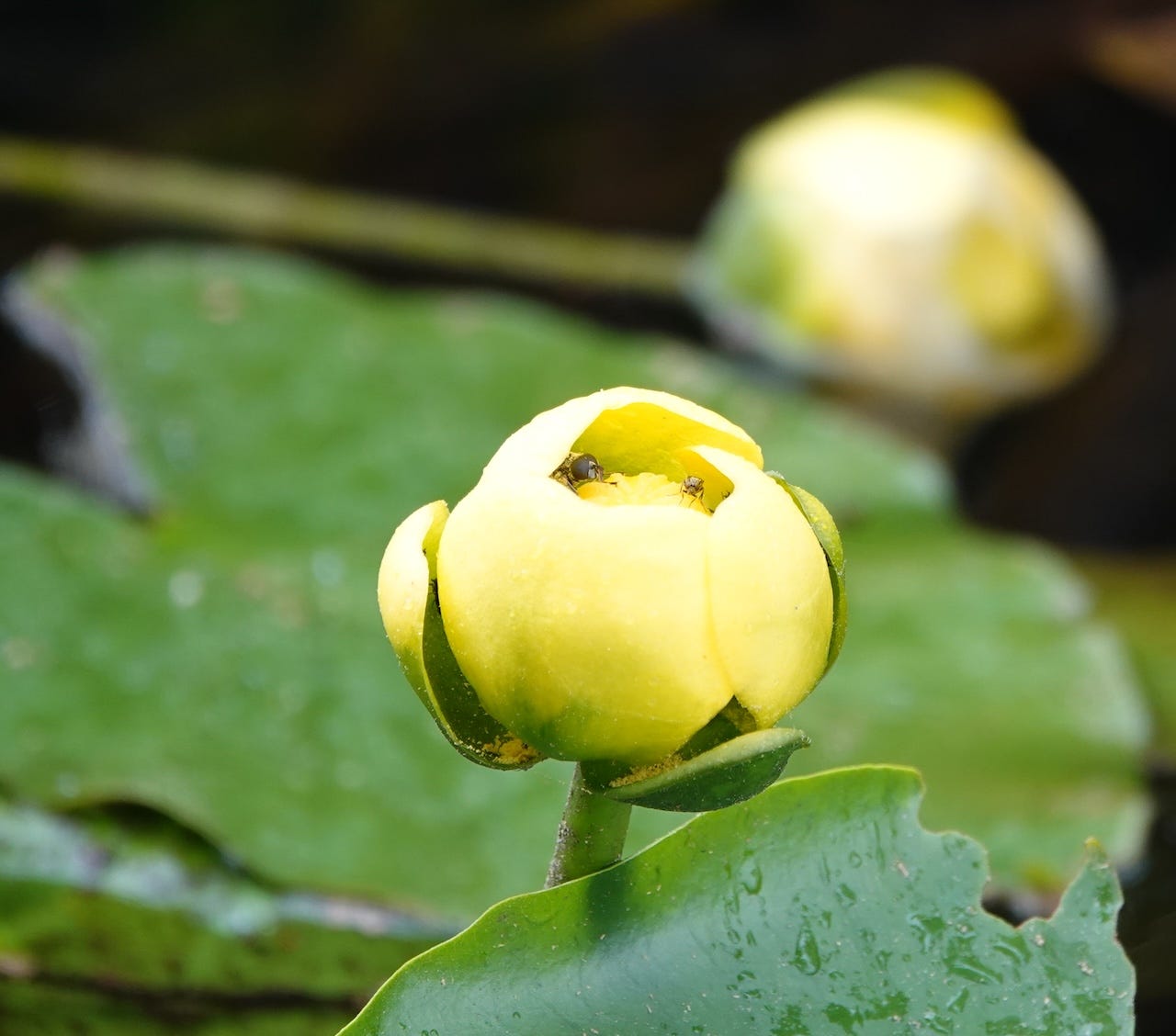
That’s so cool about the cleanup work you’re doing!
And I too love cedar waxwings — so often birds are badly named but in their case that slicked back waxy look is so distinctive!
This was so uplifting, Tom, thank you. I was just in an older suburb (1950s-era—I think—brick houses, quiet but not a lot of trees) near Denver for a week where the lack of birdsong was noticeable, especially coming back to my own neighborhood which I’ve come to realize must be good habitat. Made me sad thinking of habitat loss, but reading this reminds me that repair happens faster than we realize. Kudos to you, and thanks! for doing that cleanup! Satisfying work sometimes.